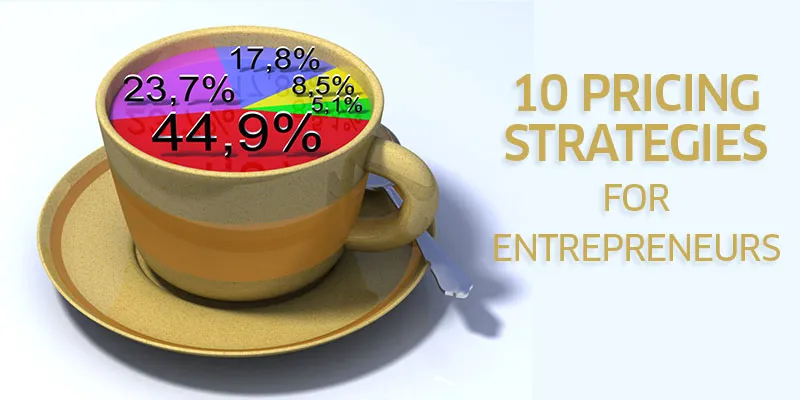10 Pricing strategies for Entrepreneurs

In my recent training workshop for startups, an entrepreneur told me he is facing a lot of pricing pressure from customers.
I asked all the other startups present in the room if they face the same situation, and everyone said a "YES".
Pricing problems are not rare, and among all issues faced by startups, pricing is right on top!
Though there is no perfect pricing method, I am sharing 10 pricing strategies for startups below:
1. Cost-led pricing
This is the most common pricing mechanism. Start by calculating all the costs involved in manufacturing the product or delivering the service (variable costs), add the other expenses (fixed expenses), and add certain margin (expected profit) to arrive at the pricing. The pitfall of this method is its practically impossible to determine all costs as well as predict volumes required to recover them. Always keep a margin of 5-10% to be safe, rather than run into losses.
2. Competition-led pricing
For a like to like product or service, determine what is the competition offering to customers and match them. While pricing is an important factor for customers, you should have a compelling reason for your customers to buy from you apart from the pricing factor. Once you are aware of competition pricing, you may also decide to sell either too low or too high, to create a differentiation for your company.
3. Customer-led pricing
Ask your customer what he or she is willing to pay, and offer it at that price. Absurd as it may sound, this is one of the most efficient pricing mechanism (think about how you buy ads on google!).
4. Loss leader
If you cannot match your large competitors marketing muscle, then hurt them a little by offering low priced items. This will help you attract some customers, and increase your base. However, be careful - always enter this game knowing when and how to get out.
5. Introductory offer
If you are confident your customers will love you once they try your products or services, then start with introductory offers. This maybe free or heavily discounted - typically for 15-30 days after launch or for first 100 customers etc.
6. Skimming
Start as high as possible and keep coming down gradually. At the beginning of your venture, you may not know how much your customers will pay and how many will customers you will get. It is always good to recover maximum value at an early stage to ensure you remain cash flow positive.
7. Odd numbers
Bata's strategy of pricing shoes at Rs 499 rather than Rs 500 has got a lot to do with consumer psychology rather than MBA methods! Play with your price, keep them at odd numbers which will ensure customer recall!
8. One number
Remember the dollar store, where everything is priced at 1 dollar. This strategy will be profitable if you know what are the average prices and what will be the mix of items you are selling.
9. Bundled pricing
If you can bundle a set of products or services, with a perceived value higher than what customers pay for, it may increase your volumes and reduce your overheads per unit.
10. Range pricing
For a category of products, you can create a range starting from Rs 100 and go up to Rs 10000. This will allow you to sell the range of your company products or services to different category of customers.
The biggest problem in pricing at an early stage company is uncertainty - about customer traction, volume, orders, payments etc. Many entrepreneurs also feel shy about asking for money against services, and quite literally are taken for a free ride!
As an entrepreneur, we have to experiment with pricing to overcome our fears. In fact, the same product can be offered to different customers at a different price!
How? Imagine - whats the probability of getting 1 customer in 1 month - 1% (assuming 1 in every 100 prospect), whats the probability of getting 2 customers in 1 month - 1% * 1% = 0.01%, whats the probability that they will get to know each other and also share the pricing details = 1% * 1% * 1% = do your maths!
About the Author
Amit Grover, Founder, Nurture Talent Academy, is an IIT Delhi and IIM Indore alumnus. He has worked previously with Infosys, Asian Paints and Onida, before starting Nurture Talent Academy for supporting budding and current entrepreneurs. Nurture Talent Academy (www.nurturetalent.com) is India's 1st training institute for entrepreneurs. It has conducted 23 workshops across 7 cities attended by 315 entrepreneurs. The topic of the workshops include issues relevant to startup ventures like finance, marketing and business plan. He is also associated with Mumbai Angels, a group of early stage investors and has led over 20 early stage investments in last 3.5 years.







